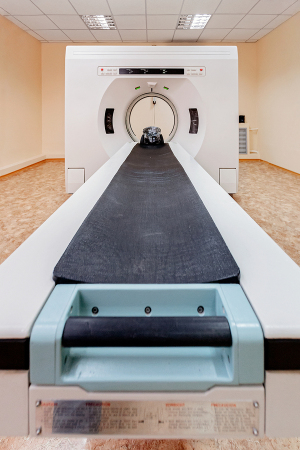by
John R. Fischer, Senior Reporter | June 26, 2020

Imaging departments are seeking future post-warranty service contracts that include more value-added support services.
In addition to traditional "break-and-fix" services, imaging departments across the U.S. are seeking value-added support services in post-warranty service contracts, according to IMV Medical Information Division’s 2020 Diagnostic Imaging Equipment Service Outlook Report.
“Hospital organizations, such as regional hospitals that are the hub for multiple healthcare facilities as well as other types of healthcare systems are already working with their service providers to negotiate such contracts, and will likely further seek to consolidate their contracts across their systems going forward,” Lorna Young, senior director at imaging insights at IMV, part of Science and Medicine Group, told HCB News. “Also, some of these value-added services will likely be offered by the OEMs, even for single modality contracts for their digital modalities.”
The COVID-19 pandemic has caused a significant shift in imaging utilization and, consequently, service needs. According to IMV, the top two support services requested at this time have been on-site service visits and replacement parts. The top modality in need of service support has been mobile X-ray, which has experienced an increase in use for COVID-related exams, while nuclear medicine cameras, mammography and MR are requiring less service, due to fewer studies being performed during the pandemic.



Ad Statistics
Times Displayed: 316
Times Visited: 2 Keep biomedical devices ready to go, so care teams can be ready to care for patients. GE HealthCare’s ReadySee™ helps overcome frustrations due to lack of network and device visibility, manual troubleshooting, and downtime.
To reduce service costs, many imaging providers are seeking service contracts with OEMs that cover multiple modalities in a single contract. They also want coverage for imaging equipment in multiple locations in their organization. For single service providers, they are seeking coverage for equipment from multiple OEMs.
Reducing the mean time for repairing imaging equipment was a top priority for two thirds of the respondents in IMV’s report. Two-thirds of respondents also indicated a desire to improve the cybersecurity of their imaging equipment and networked healthcare information technology, which is covered in less than one-fifth of their current service arrangements.
The addition of value-added remote and software-related services are designed to help meet these objectives by enabling better communication between service techs and imaging directors over the status of equipment, the use of AI to identify concerns before they become a major problem, and continued remote access to assess issues so parts can be ordered in advance. Such services include remote diagnostics, cybersecurity services, remote repair of software, software upgrades for new clinical capabilities, and software updates for bug fixes.
As many imaging departments continue to experience reduced operating hours or days, closures, layoffs, furloughs, and hiring freezes of imaging technologists, Young says it is important that they work with OEM and third-party servicers to ensure equipment is properly maintained and ready to become fully operational when appropriate.
“If the equipment has not been used for awhile, they may need the service providers to check the equipment before ramping up to make sure all the components are in working order, particularly for modalities like MR scanners and their associated magnets," she said. "One respondent said their magnet had quenched during their 2-month imaging facility closure, causing an unexpected delay in being able to scan patients due to the need to repair it. Also, regular preventive maintenance is still important to maintain.”

